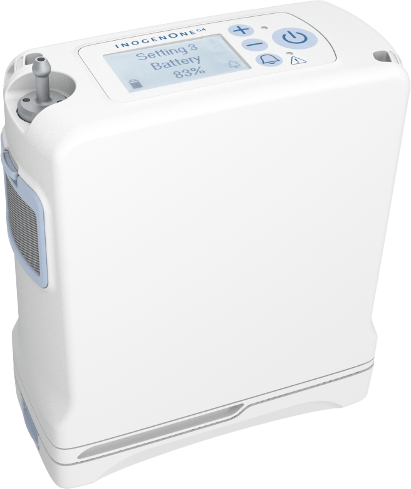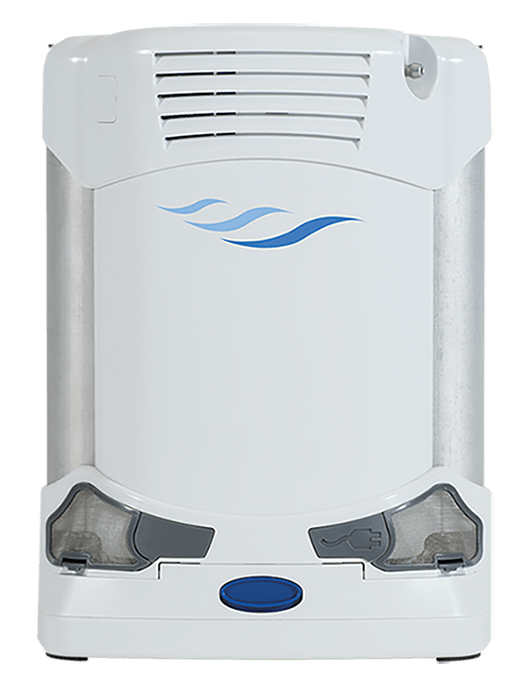
Hearing loss is a common problem for older adults that may affect their physical and emotional well-being. Hearing aids are tools that can help address hearing loss. Today, people with hearing loss can choose between prescription or over-the-counter hearing aids. In this article, we’ll define these two options and discuss the similarities and differences, pros and cons, and how to decide which choice is right for you.
What are prescription hearing aids?
Prescription hearing aids are electronic FDA-regulated medical devices intended to treat hearing loss. These devices require a prescription from a licensed hearing care professional, such as an audiologist or hearing aid dispenser, who can fit and program them to your particular needs.
To obtain prescription hearing aids, you must get a hearing test from a hearing care professional. They may refer you to an ENT for a medical evaluation if needed. The hearing care professional will work with you to select the style and technology you want, order the hearing aids for you, and take custom ear molds if needed. Once you have the hearing aids, the hearing care professional will program them to match the prescription for your hearing loss and teach you how to use them. After the fitting, you’ll return for follow-up visits to ensure that the hearing aids are working well for you.
What are over-the-counter (OTC) hearing aids?
Over-the-counter hearing aids are a new category of FDA-regulated medical devices established in 2022 for the treatment of mild to moderate hearing loss. They do not require a visit to a hearing specialist or a prescription. Consumers may purchase them online or in retail stores. Note that over-the-counter hearing aids are not for children under 18. Treating hearing loss in children requires the special expertise of pediatric audiologists.
OTC hearing aids are air-conduction devices. Air conduction hearing aids send amplified sound into your ear canal, as opposed to bone conduction hearing aids, which have a vibrator that conducts sound through your skull to your inner ear.
In September 2024, the FDA approved the first over-the-counter hearing aid software released by Apple. This software works with certain AirPod models to help users with mild to moderate hearing loss.
Find the Best Hearing Aids For You!
Key differences between prescription and OTC hearing aids
Prescription and over-the-counter hearing aids are both effective tools for treating hearing loss, but they operate differently, with each being better suited for some people depending on their preferences and needs. Let’s look at the differences between the two.
Customization and fitting
Prescription hearing aids are programmed using the results of a hearing test to maximize speech understanding while ensuring a comfortable listening experience for the user. This fine-tuning adjusts audio levels to meet the unique needs and lifestyle of the user. Ideally, the hearing aid programming will be verified using a small microphone placed in the ear canal (called real-ear measurement). The microphone measures the sound level at your eardrum at different frequencies and ensures that it matches your prescription.
People have different ear canal sizes and shapes, which can affect the sound as it leaves the hearing aid and travels to the eardrum. To achieve optimal results with prescription hearing aids, the hearing aid fitter may make custom molds of your ears to fit them more precisely to your ear canal shape and size.
OTC hearing aids vary in the degree of customization offered. Some simply offer basic volume control, while more expensive self-fitting models allow you to self-administer a hearing screening test and then adjust the features and levels on an app. Over-the-counter hearing aids are not customized for individual ear canals; instead, they come in a few stock sizes, allowing users to select the most comfortable fit.
Cost and insurance coverage
In general, OTC aids retail at lower prices than prescription hearing aids, typically costing between $200 and $1,000 per pair. Prescription hearing aids are more expensive at $1,000 to $6,000 a pair due to their customization, fitting, and higher-end features. Traditionally, prescription hearing aids have bundled pricing, meaning that dispensers include in the price the cost of follow-up services for several years.
Original Medicare does not cover hearing aids, but some Medicare Advantage plans, Medicaid, and other insurance companies have offered increasing coverage of prescription hearing aids. With the emergence of OTC hearing aids, some insurance plans now cover specific models. Customers should check with their insurance provider for details.
Technology and features
Prescription hearing aids use advanced technology to address individual users’ needs. These devices digitally process the sound to filter and amplify it based on the individual’s hearing loss. They may also have directional microphones and noise cancellation to enhance clarity in noisy environments. Many hearing aids pair with smartphone apps to allow for customization by the user.
Major hearing aid manufacturers have partnered with consumer electronics companies to include popular hearing aid features in OTC aids, including rechargeable batteries, Bluetooth connectivity, directional microphones, and noise reduction features. Therefore, for mild to moderate hearing loss, there is not a great difference between more advanced OTC and prescription hearing aids. The main limitation of OTC hearing aids is that FDA regulations limit their output to a level that will not cause hearing damage. This output limitation means they are not suitable for more severe hearing loss.
Advantages and disadvantages of prescription hearing aids
Prescription hearing aids can help people with a wide range of hearing loss. People may have unusual ear canal shapes, hearing loss configurations, or histories of ear surgery, requiring greater customization and care in the selection and fitting process. A hearing care professional has many years of education and experience to meet the needs of special populations, making prescription hearing aids the right choice for those with more unique needs.
These advantages come with some drawbacks. Prescription hearing aids can be expensive, and regular health insurance may not cover them. In addition, obtaining a prescription hearing aid may take several appointments over the course of a few months. Good hearing care professionals guide patients through the process and make the appointments worthwhile. However, some people may find the process too expensive and time-consuming.
Advantages and disadvantages of over-the-counter hearing aids
OTC hearing aids are more accessible, making them a good choice for people in rural areas, bedbound seniors, or others who have difficulty getting to a hearing care professional. Their lower price point allows people to try them without making as great of a financial commitment.
Although they are less expensive and more accessible, FDA regulations limit the audio output, making them inappropriate for more severe hearing loss. Also, people with very narrow or small ears may find them uncomfortable. Some people may experience an occlusion effect in which their voices initially sound strange. This issue may be more easily mitigated with the help of a hearing care professional guiding the fitting.
Which type of hearing aid is right for you?
If you simply have difficulty understanding conversations in background noise, you may have mild to moderate hearing loss that could benefit from OTC aids. However, if you find yourself straining to hear in quiet environments or have difficulty hearing even loud sounds like lawnmowers, you may have more severe hearing loss requiring prescription amplification.
You should also consider the degree of assistance you want on your hearing aid journey. Prescription hearing aids come with fitting services and advice from a professional. OTC aids generally require the consumer to fit and customize the hearing aids themselves, even though some models offer telephone support and online video tutorials.
Whether over-the-counter or prescription, any hearing aid will require a period of adaptation to get used to the sound. Give the aids a few days before you decide whether they work well for you.
Seeking professional advice
OTC hearing aids are only appropriate for adults with mild to moderate hearing loss. If you suspect you have a more severe hearing problem, consult an audiologist first. You’ll also want to consult with an audiologist if you notice any of the red flags indicating your hearing loss is a medical concern, such as if you hear better in one ear than the other, notice a sudden change in your hearing in the last 90 days, or experience dizziness, tinnitus, ear pain, or ear drainage. These are indications that your hearing loss requires medical evaluation and treatment.
Though hearing loss is a concerning and life-affecting issue, hearing aids may help. The customization and professional assistance included with prescription hearing aids may make them the right choice for some, while others may prefer the price and ease of access to over-the-counter hearing aids. With the proper knowledge, you can make a choice that best suits your preferences and hearing loss needs.








